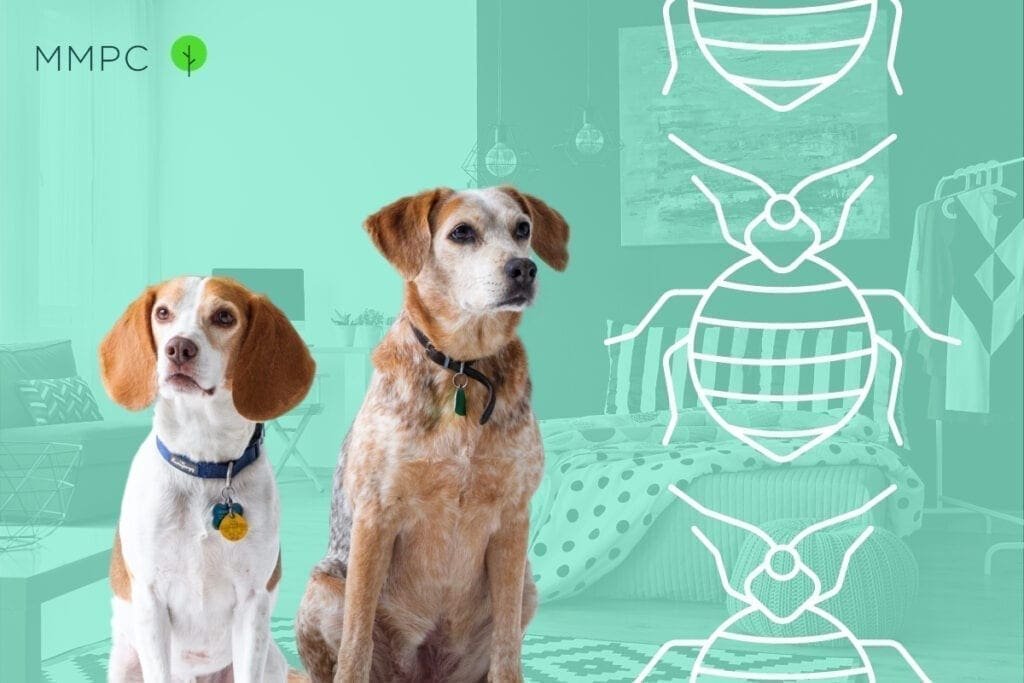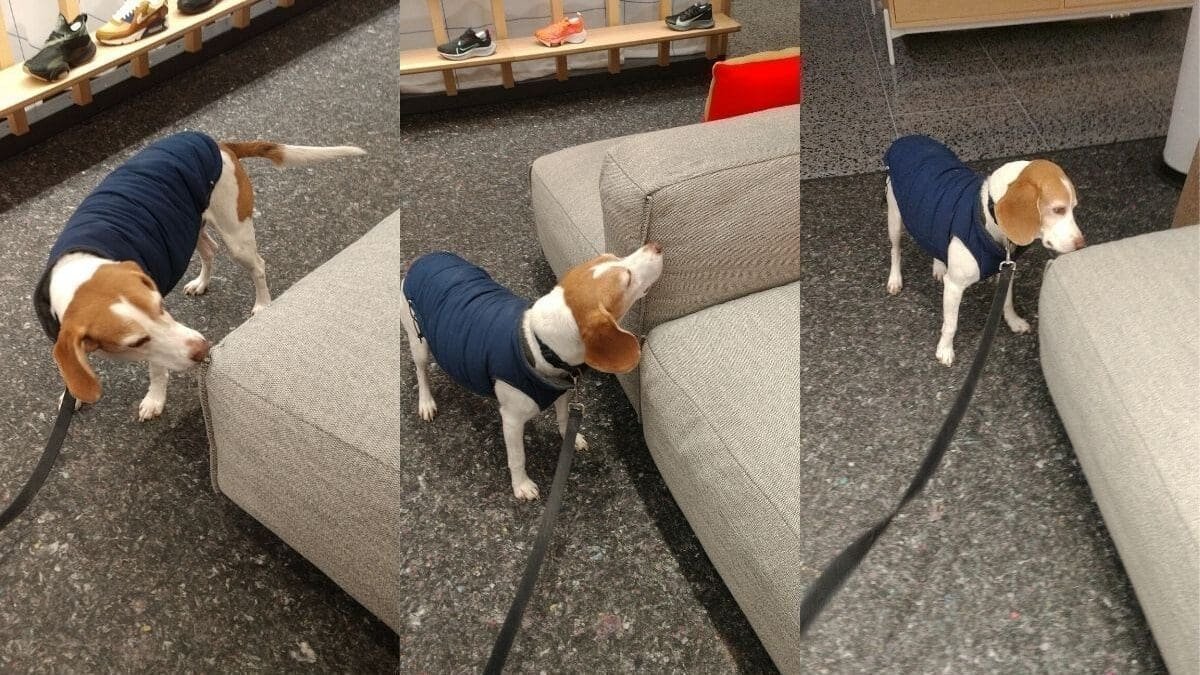
It can be incredibly stressful to determine whether your home is infested with bed bugs. However, if you’ve taken the smart step of scheduling a K9 bed bug inspection, it’s crucial to prepare adequately before the inspection takes place. Proper preparation will help ensure that the inspection is accurate and thorough.
Here’s what you need to know and do before hiring bed bug sniffing dogs to find (or rule out) bed bugs.
When Do You Need a K9 Bed Bug Inspection?
Bed bugs are very adaptable and regularly travel up to 20-feet from their hiding places during their nocturnal routine. The cracks and crevices that provide safe havens for these pests can be easy to miss, even for experienced inspectors.
Specially trained scent-detection dogs can locate hiding places more accurately than a solely visual inspection, catching things their human companions may have missed.
If you suspect you might have a bed bug problem, a canine bed bug inspection will sniff out answers to these questions for you:
- Do you really have bed bugs?
- Where are they hiding?
- How bad is the infestation?
In order for the canine inspection team to accurately locate bed bugs and their hiding places, it’s imperative that you prepare your home properly prior to inspection.
How To Prepare For a K9 Bed Bug Inspection
Our canine inspectors prefer a controlled environment in order to provide you with the most accurate diagnosis possible.
If you’re planning to schedule an inspection, it’s also important to refrain from spraying pesticides in and around your home. Chemical pesticides can mask the scent of bed bugs, and exposure can also be toxic to the canines.
Certain household conditions, such as clutter or strong odors, may be distracting to bed bug-sniffing dogs and throw off their search.
In an effort to have the most accurate inspection possible, clear away any clutter that might interfere. It’s much easier for canines to search for bugs in a clean, clutter-free environment. We recommend starting the decluttering process a week or so before the actual inspection, so that you’re not overwhelmed with a large cleaning project the night before the inspector comes.
About a week out from the inspection, make arrangements to have your pets out of the house while the canine and inspector are working. Pets (except for fish in a tank) can’t be onsite during an inspection, because they could easily distract the canine. Whether that means taking your cat to the neighbors house, or having a friend take your dog on a long walk, plan ahead of time to have your pet offsite.
On the day of the inspection, it’s helpful to move large furniture at least 2 feet away from the walls so that the canine has plenty of room to search around baseboards, corners, and furniture in each room.
If you’ve taken any overnight trips recently, be sure leave the suitcases and bags out so they can also be sniffed for potential bed bugs.
K9 Bed Bug Inspection Checklist
According to Herbie Yan, a veteran bed bug inspector and canine handler at MMPC for 11 years, here’s a list of things you should do prior to (and during) your inspection.
1. Remove Odors
In an effort to ensure an accurate canine bed bug inspection, it’s very important to remove strong odors. Inspection day is not the right day to have a big, tasty, breakfast. Sometimes Herbie gets sent to inspect a home of a family that’s just had breakfast tacos, pancakes, and/or bacon. His partner, Mika, gets so interested in the aroma of bacon that she isn’t able to focus on finding bed bugs.
Two of the other main odors that Herbie often runs into trouble with are the smell of smoke and the scent of perfumes and colognes.
- Do not cook anything that will leave a strong, lingering aroma prior to the inspection. Bacon is a common culprit, for example. This can mask the scent of bed bugs and make it hard for the canine to focus on the correct scent, let alone locate it.
- Extinguish all smoking materials and empty ash trays 2 hours prior to the inspection.
- All pets (besides fish in a tank) should be off-site for the inspection.
- Avoid using strong cleaning agents or rubbing alcohol. The use of overpowering cleaning agents or rubbing alcohol can impact the canine’s sense of smell and their ability to detect bed bugs.
- The use of chemical pesticides in the 30 days prior to inspection can mask the scent of bed bugs and can be harmful to the canines.
2. Remove Distractions
Clients are allowed to watch the inspection, but we ask that you watch from a distance so as not to distract Mika while she works. Anything that might be more interesting to a dog than bed bugs, such as other pets, should be temporarily removed from the home during the inspection.
Herbie always makes sure clients turn off air conditioners, fans, and any other air devices so nothing gets in the way of Mika’s search for bugs. The air blowing from an air conditioner could make it challenging for Mika to pick up the scent of bed bugs. On top of that, air conditioners are loud, and the intense sound may become a distraction.
- Air-conditioners, forced-air heaters and fans should be turned off and windows should be closed to minimize air movement and outside noise. Air movement could take our pups off the scent and make it harder for them to locate the source of the bed bugs.
- Pet food, food dishes, and toys can distract our canines as well. Please be sure to stow these away prior to the inspection.
3. Give Access
Herbie and Mika need to be able to get into every crevice and corner of the home in their mission to find your bed bugs. This is especially important in New York, a city where many people live in tiny apartments. Clutter build up is inevitable in such small spaces.
As mentioned in the checklist, if you know you’ve got a bit of clutter buildup, give yourself a week or so to clean it up so you’re ready for the inspection.
- Leave recently used luggage or travel bags out and opened for inspection. Travel bags are a common way for bed bugs to make their way into your home.
- Clear treatment areas of clutter. Clutter will hinder the search by preventing the handler and canine from accessing bed bug hiding spots.
- Pull furniture, especially beds and headboards, away from the perimeter of the room(s) so our teams can carefully inspect the baseboards which are frequent hiding places for these pests.

What to Expect During the Inspection
On the day of an inspection, the canine and handler team starts the job by checking that the house or apartment has been properly prepared.
If you’ve read the earlier parts of this article and have made a reasonable effort, you can relax now and let the experts to their thing. The inspector will start to lead the dog around your home and perform the inspection.
Different teams work in slightly different ways. For instance, inspector Herbie and his canine, Mika, might do things in a slightly different way than another inspector.
Working left to right through each suspect room, Herbie uses a chew toy to direct Mika towards suspected areas with bugs. If Mika picks up the odor of a bed bug, she sits or paws to signal to Herbie that she’s found something. Herbie then performs a visual check to confirm the presence or signs of live bed bugs.
Once the home has been thoroughly searched, clients are given recommendations for the best treatment options based on the inspection findings. Should the client opt for bed but treatment to exterminate the infestation, a specialized technician will come to apply the treatment on a separate visit.
About MMPC: NYC’s Top-Rated Bed Bug Experts
At MMPC, our NESDCA-certified bed bug detection dogs are able to accurately detect the scent of live bed bugs, as well as viable bed bug eggs.
Their partners and handlers have logged over 1,000 hours each and understand first-hand how to conduct a comprehensive inspection for each case they handle.
Interested in booking a canine bed bug inspection in NYC? You can learn more about inspections or schedule one here.
